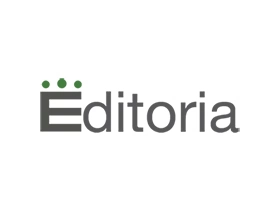Idrogeno, convertitori e integrazione FER
Giuseppe Grassi - Secom
Sommario
DEREC Consulting is your ideal partner to define hydrogen production system specification.
(Pdf in lingua inglese)
Hydrogen and Renewable energy plants: why?
- Renewable energy plants are characterized by an uncertainty of the availability of energy when it is required compared to the time when it is actually available
- The "on-site exchange", that is the injection of excess energy into the grid, has proved less and less convenient from an economic point of view
- The introduction of storage systems has improved both selfconsumption and the convenience of selling energy on a deferred basis
- The production and storage of hydrogen (for P2G or P2P use) can be a valid storage alternative to electrochemical systems (batteries)
Hydrogen Production Electrolysis Technologies
- Alkaline Water Electrolysis (AWE)
- Alkaline Water with Anion Exchange Membrane Electrolysis (AEM)
- Proton Exchange Membrane Electrolysis (PEM)
- Solid Oxide Electrolyser Cell (SOEC)
The selection of electrolysys technology is the result of the evaluation of quantity and quality of H2 produced, type of energy and water available, efficiency and CAPEX/OPEX. Each technology has got its own characteristics to match with a certain power conversion technology.
DC Power Supply technologies
Power Converters can be fit with thyristors (SCR) or IGBT and we have identified three configurations that can be used for electrolysers:
- IGBT Active Front End (AFE) Inverter with DC/DC converter (if required)
- Diodes bridge (usually 12 pulses) with with DC/DC converter
- Thyristor (SCR) Graetz Bridge converter (usually 12 pulses)
The selection of DC Power Supply is the result of the evaluation of power quality (PF, THD, DC voltage ripple), efficiency and CAPEX/OPEX.
Power Quality Requirements (THD, PF, DC Ripple)
Electrolyser's stacks require DC voltage with a small ripple (usually lower than 5%) to assure the best performances such as operating life and efficiency.
High Power factor is an important requirements because it is mandatory when connected to the grid (usually higher than 0.95) and because allow to have the strict min required size of transformers (kVA). Harmonics generated by the converter (measured with THD or TDD) must be limited to avoid instability upstream on the grid.
- IGBT Active Front End (AFE) Inverter with DC/DC converter (if required)
- Diodes bridge with with DC/DC converter
Thyristor (SCR) Graetz Bridge converter (usually 12 pulses)
This solution could satisfy "soft" requirements of THD and ripple or even more strict ones by installing filters, but it needs definitively a power factor compensation system when power factor > 0,95 is requested.
Electrolysers and Renewable Energy Plants
IGBT's converters allow also a better integration and coupling with the Renewable energy plant thanks to lower harmonics and high power factor optimizing the active power coming from the energy production plant.
Attached, you can find the complete pdf of the presentation.
- Renewable energy plants are characterized by an uncertainty of the availability of energy when it is required compared to the time when it is actually available
- The "on-site exchange", that is the injection of excess energy into the grid, has proved less and less convenient from an economic point of view
- The introduction of storage systems has improved both selfconsumption and the convenience of selling energy on a deferred basis
- The production and storage of hydrogen (for P2G or P2P use) can be a valid storage alternative to electrochemical systems (batteries)
Hydrogen Production Electrolysis Technologies
- Alkaline Water Electrolysis (AWE)
- Alkaline Water with Anion Exchange Membrane Electrolysis (AEM)
- Proton Exchange Membrane Electrolysis (PEM)
- Solid Oxide Electrolyser Cell (SOEC)
The selection of electrolysys technology is the result of the evaluation of quantity and quality of H2 produced, type of energy and water available, efficiency and CAPEX/OPEX. Each technology has got its own characteristics to match with a certain power conversion technology.
DC Power Supply technologies
Power Converters can be fit with thyristors (SCR) or IGBT and we have identified three configurations that can be used for electrolysers:
- IGBT Active Front End (AFE) Inverter with DC/DC converter (if required)
- Diodes bridge (usually 12 pulses) with with DC/DC converter
- Thyristor (SCR) Graetz Bridge converter (usually 12 pulses)
The selection of DC Power Supply is the result of the evaluation of power quality (PF, THD, DC voltage ripple), efficiency and CAPEX/OPEX.
Power Quality Requirements (THD, PF, DC Ripple)
Electrolyser's stacks require DC voltage with a small ripple (usually lower than 5%) to assure the best performances such as operating life and efficiency.
High Power factor is an important requirements because it is mandatory when connected to the grid (usually higher than 0.95) and because allow to have the strict min required size of transformers (kVA). Harmonics generated by the converter (measured with THD or TDD) must be limited to avoid instability upstream on the grid.
- IGBT Active Front End (AFE) Inverter with DC/DC converter (if required)
- Diodes bridge with with DC/DC converter
Thyristor (SCR) Graetz Bridge converter (usually 12 pulses)
This solution could satisfy "soft" requirements of THD and ripple or even more strict ones by installing filters, but it needs definitively a power factor compensation system when power factor > 0,95 is requested.
Electrolysers and Renewable Energy Plants
IGBT's converters allow also a better integration and coupling with the Renewable energy plant thanks to lower harmonics and high power factor optimizing the active power coming from the energy production plant.
Attached, you can find the complete pdf of the presentation.
Video
Fonte: mcT Oil & Gas novembre 2022 Dall’Oil&Gas all’idrogeno. PNRR, transizione energetica, raffinerie e produzione di idrogeno
Parole chiave: Convertitori e Trasformatori
- Schneider Electric
- Phoenix Contact
 English
English



























